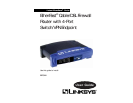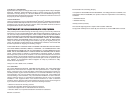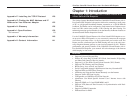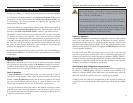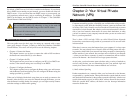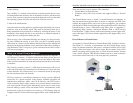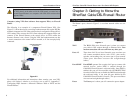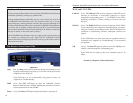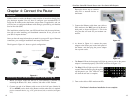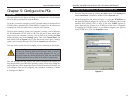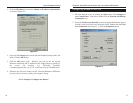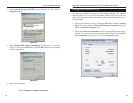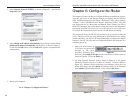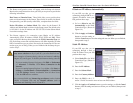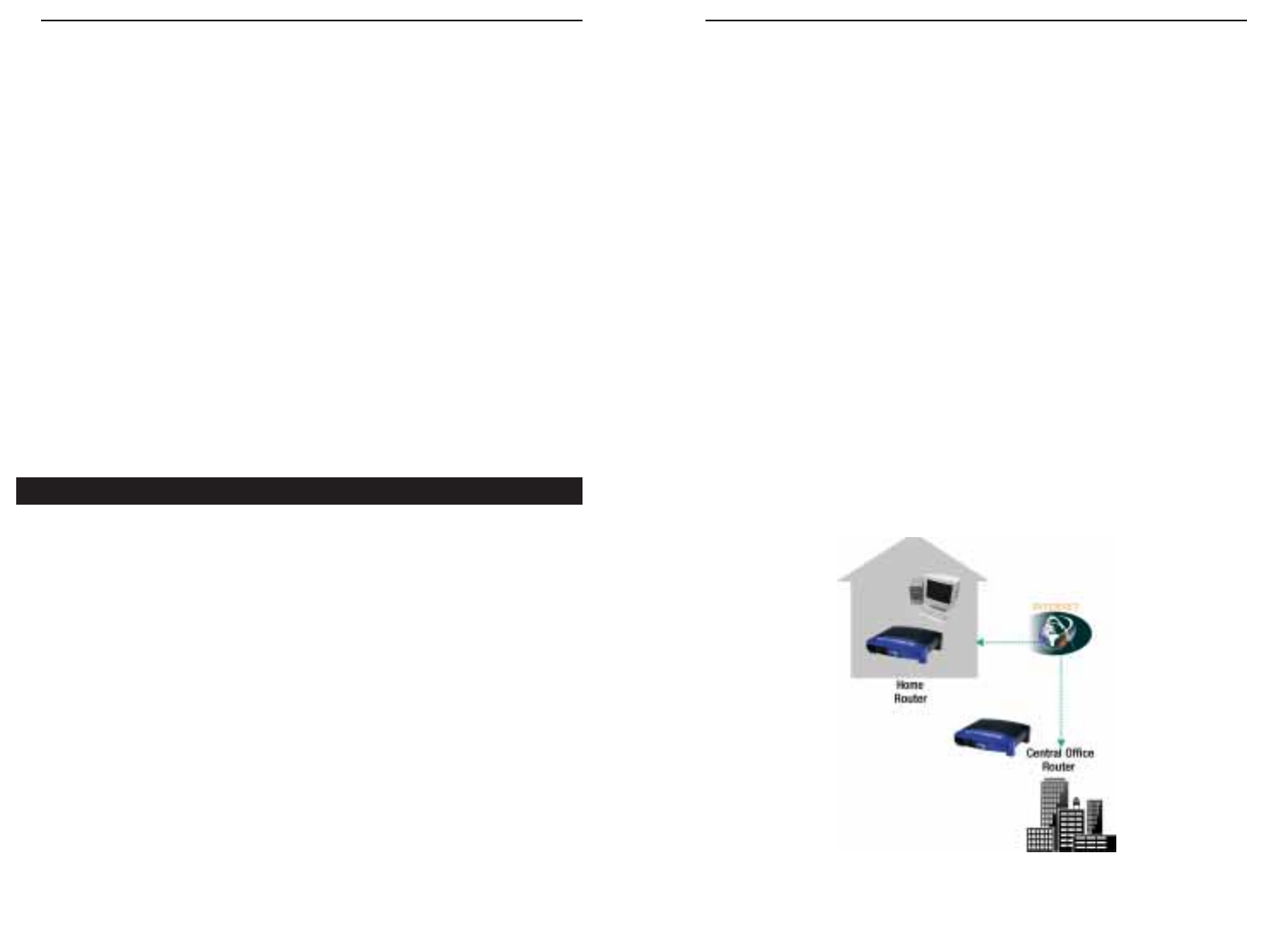
EtherFast
®
Cable/DSL Firewall Router with 4-Port Switch/VPN Endpoint
There are two basic ways to create a VPN connection:
• Firewall Router to Firewall Router
• Computer (using VPN client software that supports IPSec) to Firewall
Router
The Firewall Router creates a “tunnel” or channel between two endpoints, so
that data transmissions between them are secure. A computer with VPN client
software that supports IPSec can be one of the two endpoints. Any computer
with the built-in IPSec Security Manager (Microsoft 2000 and XP ) allows the
Firewall Router to create a VPN tunnel using IPSec (refer to “Appendix C:
Configuring IPSec between a Microsoft Windows 2000 or XP PC and the
Firewall Router”). Other versions of Microsoft operating systems require addi-
tional, third-party VPN client software applications that support IPSec to be
installed.
Firewall Router to Firewall Router
An example of a Firewall Router-to-Firewall Router VPN would be as follows.
(See Figure 2-1.) At home, a telecommuter uses his Firewall Router for his
always-on Internet connection. His router is configured with his office's VPN
settings. When he connects to his office's router, the two routers create a VPN
tunnel, encrypting and decrypting data. As VPNs utilize the Internet, distance
is not a factor. Using the VPN, the telecommuter now has a secure connection
to the central office's network, as if he were physically connected.
7
Instant Broadband
®
Series
2) Data Sniffing
Data “sniffing” is a method used by hackers to obtain network data as it trav-
els through unsecured networks, such as the Internet. Tools for just this kind of
activity, such as protocol analyzers and network diagnostic tools, are often built
into operating systems and allow the data to be viewed in clear text.
3) Man in the middle attacks
Once the hacker has either sniffed or spoofed enough information, he can now
perform a “man in the middle” attack. This attack is performed, when data is
being transmitted from one network to another, by rerouting the data to a new
destination. Even though the data is not received by its intended recipient, it
appears that way to the person sending the data.
These are only a few of the methods hackers use and they are always develop-
ing more. Without the security of your VPN, your data is constantly open to
such attacks as it travels over the Internet. Data travelling over the Internet will
often pass through many different servers around the world before reaching its
final destination. That's a long way to go for unsecured data and this is when a
VPN serves its purpose.
A VPN, or Virtual Private Network, is a connection between two endpoints - a
VPN Router, for instance - in different networks that allows private data to be
sent securely over a shared or public network, such as the Internet. This estab-
lishes a private network that can send data securely between these two locations
or networks.
This is done by creating a “tunnel”. A VPN tunnel connects the two PCs or net-
works and allows data to be transmitted over the Internet as if it were still with-
in those networks. Not a literal tunnel, it is a connection secured by encrypting
the data sent between the two networks.
VPN was created as a cost-effective alternative to using a private, dedicated,
leased line for a private network. Using industry standard encryption and
authentication techniques—IPSec, short for IP Security—the VPN creates a
secure connection that, in effect, operates as if you were directly connected to
your local network. Virtual Private Networking can be used to create secure
networks linking a central office with branch offices, telecommuters, and/or
professionals on the road (travelers can connect to a VPN Router using any
computer with VPN client software that supports IPSec, such as SSH Sentinel).
6
What is a Virtual Private Network?
Figure 2-1



